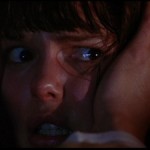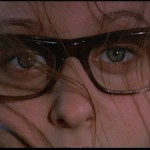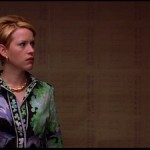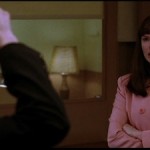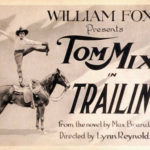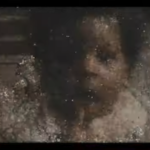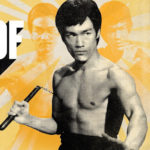New Books on Moving Images and Archiving
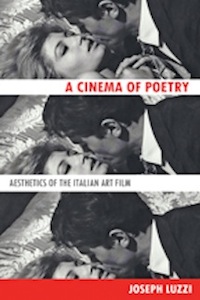 It’s no small task to keep up with the rich outpouring of books about moving-image products and often related issues of archiving, preservation, and restoration — or merely locating those of them that are hiding somewhere out there in the wide world.
It’s no small task to keep up with the rich outpouring of books about moving-image products and often related issues of archiving, preservation, and restoration — or merely locating those of them that are hiding somewhere out there in the wide world.
Here are some books that have appeared this year – we’ll list many more in the days ahead, and also place them in our Books section.
February 2014
Cindy Sherman’s Office Killer: Another Kind of Monster by Dahlia Schweitzer (Intellect Books, dist’d University of Chicago Press) A study of Office Killer, 1997, the American photographer’s only feature film.
{Click on thumbnail to view gallery}
March 2014
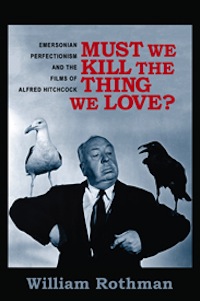 The Forms of the Affects by Eugenie Brinkema (Duke University Press) The effect on affect theory of filmmakers Greenaway, Haneke, Lynch, Hitchcock… and theorists like Freud, Barthes, and Kierkegaard.
The Forms of the Affects by Eugenie Brinkema (Duke University Press) The effect on affect theory of filmmakers Greenaway, Haneke, Lynch, Hitchcock… and theorists like Freud, Barthes, and Kierkegaard.
Must We Kill the Thing We Love? Emersonian Perfectionism and the Films of Alfred Hitchcock by William Rothman (Columbia University Press) Likens Hitchcock’s “written” style to Emerson.
Reading Joss Whedon ed. Rhonda V. Wilco, Tanya R. Cohen, others (Syracuse University Press) Essays about Buffy the Vampire Slayer‘s producer and writer.
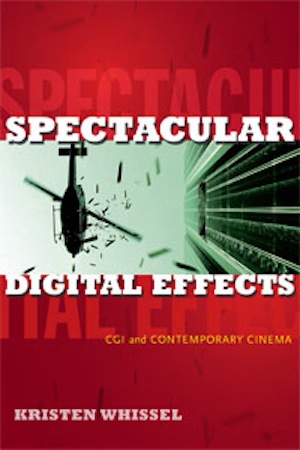 Sex Scene: Media and the Sexual Revolution ed. Eric Schaefer (Duke University Press) Essays on film, television, recorded sound, and publishing involvement in “the sexual revolution” of the 1960/70s — sexploitation, sex-ed film, erotic-film festivals, sexual innuendo on The Love Boat, gay porn, and other evidence that sex circulated in the public sphere, from the mainstream to the fringe. Scholars of cultural studies, history, and media studies highlight the increasingly fluid divide between public and private, the rise of consumer and therapeutic cultures, and the relationship between identity politics and individual rights.
Sex Scene: Media and the Sexual Revolution ed. Eric Schaefer (Duke University Press) Essays on film, television, recorded sound, and publishing involvement in “the sexual revolution” of the 1960/70s — sexploitation, sex-ed film, erotic-film festivals, sexual innuendo on The Love Boat, gay porn, and other evidence that sex circulated in the public sphere, from the mainstream to the fringe. Scholars of cultural studies, history, and media studies highlight the increasingly fluid divide between public and private, the rise of consumer and therapeutic cultures, and the relationship between identity politics and individual rights.
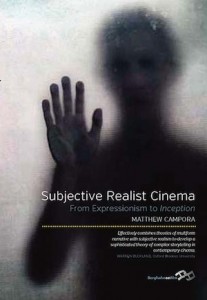 Spectacular Digital Effects: CGI and Contemporary Cinema by Kristen Whissel (Duke University Press). A professor of film & media studies at the University of California at Berkeley explores how spectacular visual effects have advanced narratives by study of live-action films made between 1989 and 2011.
Spectacular Digital Effects: CGI and Contemporary Cinema by Kristen Whissel (Duke University Press). A professor of film & media studies at the University of California at Berkeley explores how spectacular visual effects have advanced narratives by study of live-action films made between 1989 and 2011.
Subjective Realist Cinema: From Expressionism to Inception by Matthew Campora (Berghahn Books). On Mulholland Drive, Memento, and Eternal Sunshine of the Spotless Mind.
April 2014
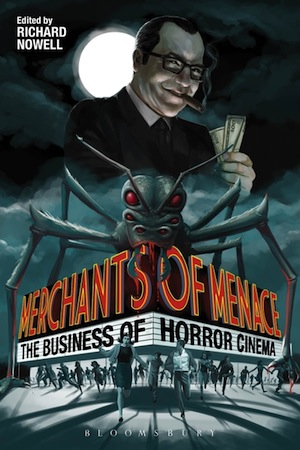 Merchants of Menace: The Business of Horror Cinema ed. Richard Nowell (Bloomsbury Academic). Essays on horror-film production, style, marketing, and distribution: American horror cinema and horror literature of the late 1960s and 1970; how studios shaped zombie films from 1932 to 1946; Hammer “heritage” horror in 21st-century Britain, Australian horror, psychiatry’s interventions into the postwar horror business…
Merchants of Menace: The Business of Horror Cinema ed. Richard Nowell (Bloomsbury Academic). Essays on horror-film production, style, marketing, and distribution: American horror cinema and horror literature of the late 1960s and 1970; how studios shaped zombie films from 1932 to 1946; Hammer “heritage” horror in 21st-century Britain, Australian horror, psychiatry’s interventions into the postwar horror business…
The Pedagogical Imagination: The Republican Legacy in Twenty-First Century French Literature and Film by Leon Sachs (University of Nebraska Press). The works of Agnes Varda, Erik Orsenna, Abdellatif Kechiche, Francois Begaudeau, and others provide insight into French conceptions of national identity and values. Sachs emphasizes less “what” literature and film say about education to “how” they say it, and argues that the most important literary and film treatments of French education explore questions of education through experiments with form.
Playing with Religion in Digital Games (Indiana University Press). In the first volume of the press’s Digital Game Studies series, Heidi Campbell and Gregory P. Grieve edit a collection of essays whose rationale is that religious elements pervade modern video games, as evidenced by such elements as shamans, paragons, and “God-mode.”
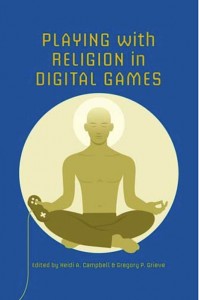 In the Shinto-inspired Japanese video game Okami, the popular The Legend of Zelda and Halo, and many other game, religious themes and symbols drive narratives and frame storylines. Writers ask such questions as: How does religion help organize the communities in “massively multiplayer online role-playing games” (MMORPGs) such as World of Warcraft? What role has censorship played in localizing games like Actraiser in the western world? How do evangelical Christians react to violence, gore, and sexuality in some of the most popular games such as Mass Effect or Grand Theft Auto? How do Arab and American video games portray Islam?
In the Shinto-inspired Japanese video game Okami, the popular The Legend of Zelda and Halo, and many other game, religious themes and symbols drive narratives and frame storylines. Writers ask such questions as: How does religion help organize the communities in “massively multiplayer online role-playing games” (MMORPGs) such as World of Warcraft? What role has censorship played in localizing games like Actraiser in the western world? How do evangelical Christians react to violence, gore, and sexuality in some of the most popular games such as Mass Effect or Grand Theft Auto? How do Arab and American video games portray Islam?
There are “hardcore Christian gamers”?
Campbell, an associate professor of communication at Texas A&M University, is director of the Network for New Media, Religion, and Digital Culture Studies and editor of Digital Religion. She has published three books in that area: Digital Religion: Understanding Religious Practice in New Media Worlds (Routledge, 2013), When Religion Meets New Media (Routledge, 2010), and Exploring Religious Community Online (Peter Lang-Digital Formation Series. 2005). Grieve is an associate professor of religious studies at the University of North Carolina at Greensboro and director at UNCG of MERGE: A Network for Collaborative Interdisciplinary Scholarship and co-chair of the American Academy of Religion’s section on Religion and Popular Culture. He is author of Retheorizing Religion in Nepal (Palgrave Macmillan, 2006) and editor (with Steven Engler) of Historicizing “Tradition” in the Study of Religion (Walter de Gruyter, Inc., 2005).
Grieve was an early observer of the questions increasingly asked about religion in digital games. His 1995 essay, “Imagining a Virtual Religious Community: Neo-pagans on The Internet,” noted: “Anyone who has spent time exploring the Internet cannot help but notice the prevalence of Neo-Paganism.” He investigates what he called “the seeming paradox of why neo-Paganism, a self-proclaimed nature religion, pervades cyberspace” — it seems paradoxical because “what defines the social space opened up by the Internet is lack of ‘presence,’ the face-to-face interaction of oral communication which is generally considered necessary for the formation of authentic communities, religious or otherwise,” he wrote.
He suggested that the answer to his questions begins with noting that “other media besides speech enable human beings to imagine communities which transgress the horizons of face-to-face interaction” because, as another researcher, Benedict Anderson, observed, “all communities larger than primordial villages of face-to-face contact (and perhaps even those) are imagined.”
Grieve suggested that “what is unique about neo-Pagan practitioners is that they are able to imagine a religious community which is not dependent on presence. Instead of presence their Internet communities are sustained by the notion of a religious ‘energy’ which is created and circulated by ‘personal rituals.’ It is their shared ‘feeling of energy’ which binds them together in cyberspace, and enables them to imagine a virtual religious community.”
That is a significant achievement, he suggested: “Neo-Pagans ‘re-enchant’ the disenchanted landscape of modernity through a religious strategy whose myths are patterned on an imagined pre-Christian European religion, but whose practices revolve around the production of an affective sentiment which neo-Pagan nomenclature labels ‘energy.’ The ‘feeling of energy’ created by personal rituals is a religious strategy which employs a ritualized imagination. The ritualized imagination is the sanctification not of the content of specific creative acts, but of the act of creation itself.”
Grieve arrived at that conclusion by observing four religious Usenet newsgroups — alt.pagan, soc.religion.bahai, soc.religion.christian, and soc.religion.eastern for six months, concentrating on ‘alt.pagan,’ whose stated role is to advance “discussion of paganism and Witchcraft in their various forms and traditions.” He also compared the ethnographic data from alt.pagan with his own interactions with neo-Pagans at the 1993 World Parliament of Religions, especially with members of Circle — a ‘Shamanic Wiccan Church’ headquartered near Madison, Wisconsin; and Covenant of The Goddess — a Wiccan Coven headquartered in Berkeley, California.
In keeping with that early work on such issues, the members of the Network for New Media, Religion, and Digital Cultural Studies – those include scholars in political science, area studies, and psychology – explore what is happening at the intersections of religion, the internet, and new, social and mobile media, a growing research area. In a post on the group’s website, Campbell writes that her and Grieve’s collection “spotlights the growing influence religion has in digital gaming. It also showcases the increased attention by scholars around the world to digital gaming and its impact on popular conceptions of religion.” She suggests that the use of religious images, narratives, and characters in popular video and digital games provides insights into the broader role of religion in popular culture. The essay collection “maps the ways religion is used in gaming to create myths and meanings, revealing the implications of these uses for gamers and framings of religion.”
Grieve agrees: “There is a notion that games and religion have nothing to do with each other. This book provides evidence that they do actually have a lot of similarities and these similarities offer insights into aspect of how religion is performed.” Campbell says that essays in the collection show, for example, how using Muslims and Hindu gods as gaming characters “reframes religion in both positive problematic ways.” Other chapters, she adds, “consider how some characterizations of religion expressed in popular games present non-traditional conceptions of the relationship that exists between virtual and spiritual worlds.”
Such observations, she suggests, shed light on existing questions about the role of religion in society and conceptions of religion outside religious communities. And that, she adds, demonstrates why the field of games studies needs to pay more attention to the role played by religion in digital games. Grieve says: “Many people have made very general claims about religion and games, but few close readings about the games themselves exist.”
Power and Paradise in Walt Disney’s World by Cher Krause Knight (University Press of Florida). Scholarly/personal perspectives on the design, appeal, and cultural impact of Disney World, Florida.
May 2014
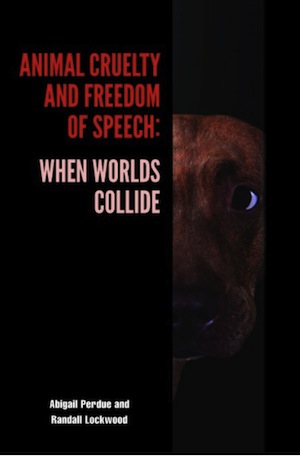 Animal Cruelty and Freedom of Speech: When Worlds Collide by Abigail Perdue and Randall Lockwood (Purdue University Press). A study of US v. Stevens, in which in April 2010 the U.S. Supreme Court determined the First Amendment status of videos of animal cruelty. That prompted Congress to pass, in December 2010, the Animal Crush Video Prohibition Act of 2010 which is also undergoing legal scrutiny. The Stevens case entailed several issues in government involvement in public morality, and reflected on judicial attitudes towards sexual deviance and dogfighting. The Stevens case arose from anti-cruelty investigators’ discovery in the 1990s of a lucrative market in “crush videos” in which people, seeking to gratify a sexual fetish, depicted small animals being slowly crushed to death. Stevens is one of only two animal-rights cases that the Supreme Court has heard, and the only one dealing with competing interests of free speech and animal cruelty. It arose from at the prosecution of Robert J. Stevens, who had compiled and sold videotapes showing dogfight and received a 37-month sentence under the 1999 law. Perdue, a lawyer and associate professor of law at Wake Forest University, and Lockwood, senior vice president for the American Society for the Prevention of Cruelty to Animals, consider issues arising from that case, and how they relate to broader issues of protections of animal welfare. The Stevens case involved the first conviction under a 1999 federal law that sought to end the making and sale of depictions of animals being harmed or killed for human’s entertainment.
Animal Cruelty and Freedom of Speech: When Worlds Collide by Abigail Perdue and Randall Lockwood (Purdue University Press). A study of US v. Stevens, in which in April 2010 the U.S. Supreme Court determined the First Amendment status of videos of animal cruelty. That prompted Congress to pass, in December 2010, the Animal Crush Video Prohibition Act of 2010 which is also undergoing legal scrutiny. The Stevens case entailed several issues in government involvement in public morality, and reflected on judicial attitudes towards sexual deviance and dogfighting. The Stevens case arose from anti-cruelty investigators’ discovery in the 1990s of a lucrative market in “crush videos” in which people, seeking to gratify a sexual fetish, depicted small animals being slowly crushed to death. Stevens is one of only two animal-rights cases that the Supreme Court has heard, and the only one dealing with competing interests of free speech and animal cruelty. It arose from at the prosecution of Robert J. Stevens, who had compiled and sold videotapes showing dogfight and received a 37-month sentence under the 1999 law. Perdue, a lawyer and associate professor of law at Wake Forest University, and Lockwood, senior vice president for the American Society for the Prevention of Cruelty to Animals, consider issues arising from that case, and how they relate to broader issues of protections of animal welfare. The Stevens case involved the first conviction under a 1999 federal law that sought to end the making and sale of depictions of animals being harmed or killed for human’s entertainment.
Animating Film Theory ed. Karen Beckman (Duke University Press). Essays on e.g. neglect of animation.
Avant-Garde Videogames: Playing With Technoculture by Brian Schrank (MIT Press). An assistant Professor at the College of Computing and Digital Media at DePaul University examines relationship among games, technology, culture, and art in avant-garde videogames that, for example, create new ways of making and playing games, opening circuits of play by, for example, revealing their own nature as games. To demonstrate novel strategies, he four varieties of avant-garde games: radical formal, which break up their flow of play so players can engage with their materiality, sensuality, and conventionality; radical political, which play with art and politics as well as fictions and everyday life; complicit formal, which treat videogames as resources for contemporary art as occurs in any other art medium; and complicit political, which use populist methods to blend life, art, play, and reality. The book “radically challenges the status quo of how we see games, their place in art and culture, and provides a conceptual map of the many potential futures of this vibrant aesthetic form,” according to Tracy Fullerton, an associate professor of Interactive Media & Games at the University of Southern California.
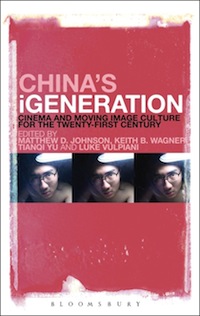 China’s iGeneration: Cinema and Moving Image Culture for the Twenty-First Century edd. Matthew D. Johnson, Keith B. Wagner, Tianqi Yu, Luke Vulpiani (Bloomsbury Academic). Scholars, critics, and practitioners on visual forms such as not only conventional movies, but also 3D and IMAX films, experimental documentaries, and pirated video pastiche argue that a new generation of motion-picture artists and activists is making its mark on global digital culture using recent technologies such as mobile phone cameras and exploring new forms of screening such as through social media. The result, the authors of these essays say, is a radical transformation of conventional notions of cinema and the emergence of a “cinema of dispersion” based in mobile, mutable digital forms. Included are essays on first-person documentaries by women, “quasi-documentary, cellflix, and web spoofs”; new Chinese animation; the use of film in Chinese contemporary art; the emerging “iGeneration” of Chinese filmmakers; the work of San Yuan Li, Zhang Yimou, and Wu Wenguang; new methods of moving-image distribution in China; Xue Jianqiang as “reckless documentarian” of post-WTO China; Docu-ani-mentary” and activist cinema; digital activism in Southern China; and grassroots independent film festivals.
China’s iGeneration: Cinema and Moving Image Culture for the Twenty-First Century edd. Matthew D. Johnson, Keith B. Wagner, Tianqi Yu, Luke Vulpiani (Bloomsbury Academic). Scholars, critics, and practitioners on visual forms such as not only conventional movies, but also 3D and IMAX films, experimental documentaries, and pirated video pastiche argue that a new generation of motion-picture artists and activists is making its mark on global digital culture using recent technologies such as mobile phone cameras and exploring new forms of screening such as through social media. The result, the authors of these essays say, is a radical transformation of conventional notions of cinema and the emergence of a “cinema of dispersion” based in mobile, mutable digital forms. Included are essays on first-person documentaries by women, “quasi-documentary, cellflix, and web spoofs”; new Chinese animation; the use of film in Chinese contemporary art; the emerging “iGeneration” of Chinese filmmakers; the work of San Yuan Li, Zhang Yimou, and Wu Wenguang; new methods of moving-image distribution in China; Xue Jianqiang as “reckless documentarian” of post-WTO China; Docu-ani-mentary” and activist cinema; digital activism in Southern China; and grassroots independent film festivals.
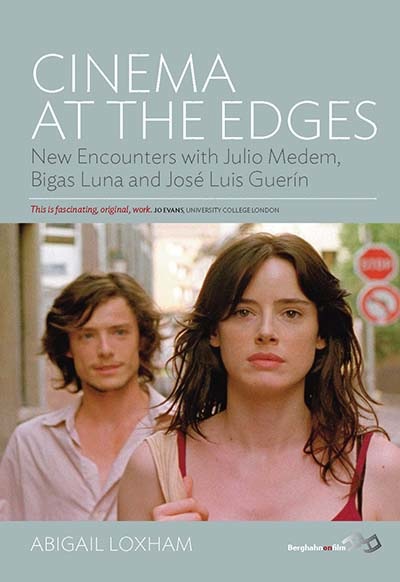 Cinema at the Edges: New Encounters With Julio Medem, Bigas Luna, and Jose Luis Guerin by Abigail Loxham (Berghahn Books). Applies psychoanalytic and other theory in a study of the three Spanish directors, with particular attention to Basque and Catalan identity, and issues relating to “the peripheries: actual, geographical, metaphorical, and corporeal” and the insight they provide into the filmmakers’ cultural and critical importance.
Cinema at the Edges: New Encounters With Julio Medem, Bigas Luna, and Jose Luis Guerin by Abigail Loxham (Berghahn Books). Applies psychoanalytic and other theory in a study of the three Spanish directors, with particular attention to Basque and Catalan identity, and issues relating to “the peripheries: actual, geographical, metaphorical, and corporeal” and the insight they provide into the filmmakers’ cultural and critical importance.
A Cinema of Poetry: Aesthetics of the Italian Art Film by Joseph Luzzi (Johns Hopkins University Press). Antonioni, Bertolucci, De Sica, Fellini, Pasolini, Rossellini… and film’s relations with literature.
Television and British Cinema: Convergence and Divergence Since 1990 by Hannah Andrews (Palgrave Macmillan)
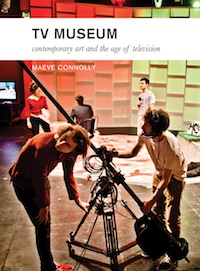 TV Museum: Contemporary Art and the Age of Television by Maeve Connolly (Intellect Books / University of Chicago Press). A lecturer in film, art and creative technologies at Dun Laoghaire Institute of Art, Design & Technology in Dublin takes a novel approach to analyzing television’s place within contemporary art and culture as she charts the changing status of television as cultural form, object of critique, and site of artistic invention. She looks in artworks, exhibitions, and institutional practices in diverse cultural and political contexts to demonstrate television’s continued importance for contemporary artists and curators seeking to question the formation and future of the public sphere. She discusses exhibiting television as object; soaps, sitcoms, and symbolic value in art and television; reality TV and the social turn in art; TV archives, memory, and media events; broadcasting and the public realm; TV talk shows and curatorial practice; and TV production cultures.
TV Museum: Contemporary Art and the Age of Television by Maeve Connolly (Intellect Books / University of Chicago Press). A lecturer in film, art and creative technologies at Dun Laoghaire Institute of Art, Design & Technology in Dublin takes a novel approach to analyzing television’s place within contemporary art and culture as she charts the changing status of television as cultural form, object of critique, and site of artistic invention. She looks in artworks, exhibitions, and institutional practices in diverse cultural and political contexts to demonstrate television’s continued importance for contemporary artists and curators seeking to question the formation and future of the public sphere. She discusses exhibiting television as object; soaps, sitcoms, and symbolic value in art and television; reality TV and the social turn in art; TV archives, memory, and media events; broadcasting and the public realm; TV talk shows and curatorial practice; and TV production cultures.
June 2014
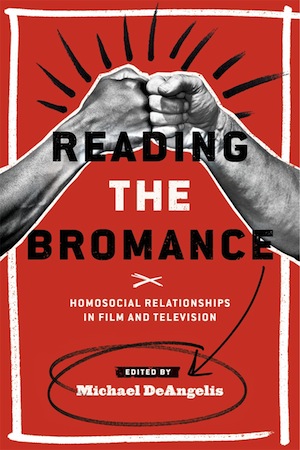 John Williams’s Film Music: Jaws, Star Wars, Raiders of the Lost Ark, and the Return of the Classical Hollywood Music Style by Emilio Audissino (University of Wisconsin Press). The neoclassicism of the composer, born 1932.
John Williams’s Film Music: Jaws, Star Wars, Raiders of the Lost Ark, and the Return of the Classical Hollywood Music Style by Emilio Audissino (University of Wisconsin Press). The neoclassicism of the composer, born 1932.
Reading the Bromance: Homosocial Relationships in Film and Television ed. Michael DeAngelis (Wayne State University Press). Essays on films (I Love You, Man, Superbad, Humpday, The Hangover…) and TV shows (Friends, Seinfeld, House…).
The Struggle for Form: Perspectives on Polish Avant-Garde Film, 1916-1989 ed. Kamila Kuc and Michael O’Pray (Wallflower Press, dist’d Columbia University Press). Essays on e.g. Franciszka and Stefan Themerson and the Polish Futurists.
Walter Ruttmann and the Cinema of Multiplicity: Avant-Garde, Advertising, Modernity by Michael Cowan (Amsterdam University Press, dist’d University of Chicago Press). An associate professor of German Studies and the Program in World Cinemas at McGill University, Canada, analyzes the work of the experimentalist and Nazi propagandist Walter Ruttmann whose Berlin: Symphony of a Great City appeared in 1927 and who later worked as an assistant to director Leni Riefenstahl during the production of Triumph of the Will. Cowan details the ideological and aesthetic shifts in Ruttman’s films, draws attention to neglected bodies of film material, and calls for study of the institutional and financial contexts of films commission, production, and distribution.
July 2014
Bangladesh’s Changing Mediascape: From State Control to Market Forces ed. Brian Shoesmith, Jude William Genilo, and MD Asiuzzaman (Intellect Books, distributed by University of Chicago Press)
Previous Post: Wunderkino 4: Visions of House and Home
Next Post: Watching the Beat Cops, at Wunderkino 2014

